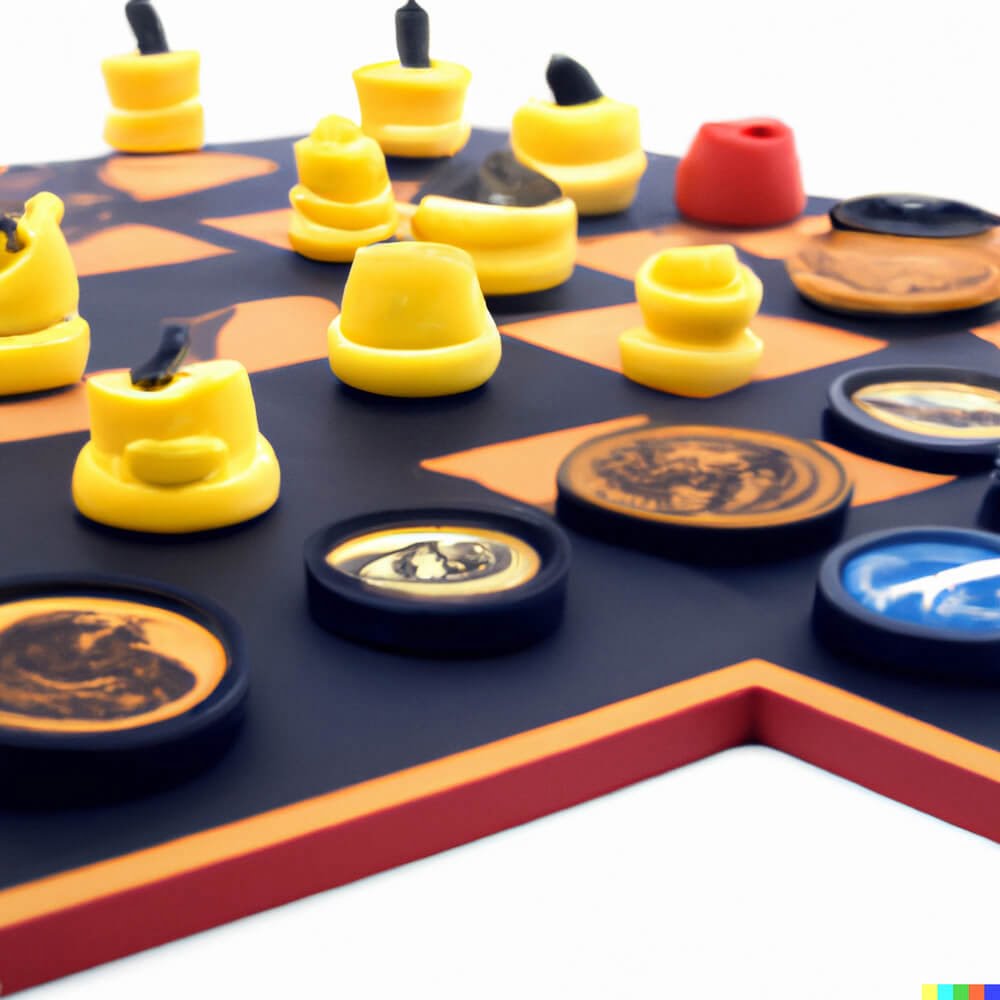Are you looking for a fun and nostalgic game to play with the family? Look no further than the classic chutes and ladders board game. This timeless favorite has been bringing joy to families for generations, and its simple yet entertaining gameplay continues to captivate players of all ages. In this article, we’ll explore the origins, rules, educational benefits, variations, pop culture references, and tips for winning at this beloved game.
The classic chutes and ladders board game holds a special place in the hearts of many. Whether you have fond memories of playing it as a child or you’re introducing it to your own kids for the first time, there’s something undeniably charming about this beloved game. From its colorful board to the thrill of climbing ladders and avoiding chutes, there’s no denying the appeal of this classic pastime.
In the following sections, we’ll take a deep dive into everything you need to know about the chutes and ladders game. From its fascinating history to its educational benefits for children, as well as tips for winning and making the most out of the gameplay experience, this article will serve as your comprehensive guide to all things related to this enduring family favorite.
So dust off your game board and get ready to embark on a journey filled with nostalgia and fun.
History of Chutes and Ladders
The classic Chutes and Ladders board game has a rich history that dates back centuries, making it a timeless family favorite enjoyed by multiple generations. The origins of this beloved game can be traced back to ancient India, where it was known as “Moksha Patam.” This ancient version of the game was used as a tool to teach moral lessons and guide players towards enlightenment through virtues.
Over time, the game made its way to England and eventually the United States, where it underwent various transformations before becoming the Chutes and Ladders game we know today. In 1943, Milton Bradley Company released the first commercially available version of Chutes and Ladders in the United States, solidifying its place as a classic board game for families to enjoy.
The enduring appeal of Chutes and Ladders lies in its simplicity and universal themes that resonate with players of all ages. The game’s roots in moral teachings have evolved into a fun and engaging experience for children, while also providing an opportunity for families to bond over a shared love for this classic board game. Today, Chutes and Ladders remains a cherished staple in family game nights and continues to create lasting memories for players around the world.
- Origins of Chutes & Ladders
- Traced back to ancient India as “Moksha Patam”
- Used to teach moral lessons
- Transformation to Modern Version
- Journey from India to England and then United States
- Milton Bradley Company’s commercial release in 1943
- Enduring Appeal
- Simple yet universal themes
- Classic Board Game
- Cherished staple in family game nights
How to Play
The classic Chutes and Ladders board game is a timeless favorite for families and children of all ages. The game, also known as Snakes and Ladders, has been enjoyed for generations and continues to be a popular choice for game night. Learning how to play this beloved game is simple, making it accessible to players of all skill levels.
To begin playing the classic Chutes and Ladders board game, each player selects a game piece and places it on the starting square at the bottom of the board. Players take turns rolling the dice and moving their pieces forward the number of spaces indicated on the dice.
The objective of the game is to be the first player to reach the top of the board, reaching square 100. However, players must navigate their way past chutes – which move their pieces down the board – and ladders – which allow them to climb higher.
The element of chance in rolling the dice creates an unpredictable and exciting gameplay experience. This makes Chutes and Ladders an excellent choice for young children who are learning about taking turns, handling disappointment when landing on a chute, and celebrating success when climbing a ladder.
Moreover, this classic board game also promotes counting skills as well as strategic thinking as players try to plot their way to victory while avoiding potential setbacks like chutes. With its simple rules and engaging gameplay, Chutes and Ladders provides hours of timeless fun for families worldwide.
| Classic Chutes and Ladders Board Game | Benefits |
|---|---|
| Suitable for all ages | Promotes cognitive development |
| Easy-to-follow rules | Encourages strategic thinking |
| Accessible gameplay experience | Improves counting skills |
Educational Benefits
The classic Chutes and Ladders board game has been a beloved childhood pastime for generations, and it’s not just a source of entertainment. This timeless game also offers numerous educational benefits for children, making it a valuable addition to any family game collection or classroom. From teaching counting and number recognition to promoting social skills and strategic thinking, the Chutes and Ladders game provides a fun way for kids to learn and grow.
Here are some of the cognitive and developmental benefits that children can gain from playing the classic Chutes and Ladders board game:
- Number recognition: As players move their game pieces along the numbered spaces on the board, they must visually identify and recognize each number, helping them develop basic numeracy skills.
- Counting practice: In order to advance through the game, players must count the number of spaces they move each turn. This reinforces counting skills in a fun and engaging way.
- Turn-taking and patience: Playing Chutes and Ladders requires players to take turns, teaching important social skills such as patience, waiting for one’s turn, and good sportsmanship.
- Strategic thinking: Although much of the game is based on luck with the spin of the spinner determining how far each player moves, there are moments when strategic decisions can be made about which path to take when faced with a choice between multiple routes.
These are just a few examples of how the classic Chutes and Ladders board game can benefit children’s cognitive development while providing hours of entertainment. Its simple yet effective design makes it an ideal choice for parents and educators looking for educational games that kids will love.
Variations and Adaptations
Chutes and Ladders: Classic vs. Modern
The classic Chutes and Ladders board game has been a staple in many households for decades, but it has also evolved over time to include modern adaptations. While the basic concept of the game remains the same, there are now different versions and themes that cater to various interests and age groups. From Disney-themed boards to educational variations, the Chutes and Ladders game has seen a number of interesting adaptations that add a new twist to the original gameplay.
Educational Adaptations
In recent years, educational adaptations of the classic Chutes and Ladders game have gained popularity as parents and educators look for engaging ways to make learning fun for children. Some versions of the game incorporate math problems, spelling challenges, or trivia questions into the gameplay, providing an entertaining way for kids to practice important skills while having fun. These educational adaptations not only reinforce learning but also encourage critical thinking and decision-making in a playful setting.
Themed Boards
Another trend in Chutes and Ladders adaptations is themed boards that appeal to specific interests or fandoms. For example, there are versions of the game featuring popular movie characters, superheroes, or even beloved cartoon animals.
These themed boards often come with special game pieces or cards that tie into the theme, adding an extra layer of excitement for players who are fans of the particular franchise. Whether it’s exploring a magical land with unicorns or going on an adventure with their favorite superhero, themed Chutes and Ladders boards offer a unique and immersive gaming experience for players of all ages.
Pop Culture References
The classic Chutes and Ladders board game has been a significant part of pop culture, making its way into movies, TV shows, and literature. This timeless family favorite has been featured in various forms of media, captivating audiences of all ages.
One notable reference to the game is in the popular TV show “The Simpsons,” where the characters play a life-sized version of Chutes and Ladders, adding a comedic twist to the traditional gameplay. Additionally, the game has been depicted in numerous children’s books, integrating the colorful and engaging elements of Chutes and Ladders into storytelling.
In addition to its presence in visual media and literature, the classic Chutes and Ladders board game has also been referenced in popular movies such as “Toy Story” where it is seen as one of Andy’s favorite toys. The game’s portrayal in these films and TV shows highlights its universal appeal and continues to contribute to its enduring legacy.
The influence of the classic Chutes and Ladders board game extends beyond just traditional gameplay, with its integration into various forms of entertainment solidifying its status as a beloved cultural icon.
| Pop Culture References | Movies, TV Shows, Literature |
|---|---|
| The Simpsons | Depiction of a life-sized version of the game |
| Toy Story | Seen as one of Andy’s favorite toys |
Tips and Strategies
Understanding the Gameplay Dynamics
When it comes to playing the classic Chutes and Ladders board game, understanding the gameplay dynamics is essential. The game involves a simple roll-and-move format where players take turns rolling a dice and moving their pieces along the numbered grid on the board.
The goal is to reach the last square of the grid, typically marked with number 100, before any other player. However, players must navigate through a series of ladders and chutes (slides) that can either help them advance or set them back.
Strategic Use of Ladders and Avoidance of Chutes
One key tip for winning at Chutes and Ladders is to strategically use ladders to advance quickly while actively avoiding chutes that can send you back down several rows. Since the placement of ladders and chutes is fixed on the game board, memorizing their locations and planning your moves accordingly can give you an advantage over your opponents. By focusing on climbing ladders and minimizing chute encounters, players can improve their chances of reaching the final square first.
Balancing Risk-Taking With Caution
Another strategy for making the most out of the Chutes and Ladders gameplay experience is to find a balance between risk-taking and caution. While it may be tempting to take shortcuts by climbing up ladders that are closer in proximity, it’s important to weigh the potential risks associated with encountering chutes along those paths. In essence, players should assess each move carefully to maximize their progress while mitigating setbacks caused by unlucky dice rolls or unexpected chute encounters.
Conclusion
In conclusion, the classic Chutes and Ladders board game has truly stood the test of time, captivating the hearts of players young and old for generations. From its humble origins to its modern adaptations, this timeless family favorite continues to bring joy and entertainment to households around the world. The simple yet engaging gameplay, along with the educational benefits it offers, makes it a staple in many homes and classrooms.
One of the key factors contributing to the enduring legacy of the Chutes and Ladders game is its ability to bring people together. Whether it’s a family game night or a fun activity during a playdate, this classic game fosters bonding and creates lasting memories. Its widespread popularity has also led to numerous pop culture references, further solidifying its status as a beloved icon in the world of board games.
As we reflect on the rich history and cultural impact of the classic Chutes and Ladders board game, it becomes evident that its appeal is rooted in more than just nostalgia. Its ability to impart valuable lessons to children while providing wholesome entertainment sets it apart as a timeless classic.
With its enduring legacy and continued relevance in today’s digital age, it’s safe to say that Chutes and Ladders will remain a beloved fixture in family gatherings for years to come.
Frequently Asked Questions
What Was the Original Chutes and Ladders?
The original Chutes and Ladders game was actually called “Snakes and Ladders” and originated in ancient India. It was a game of morality, with the ladders representing virtues and the snakes representing vices.
What Are the Top 5 Classic Board Games?
Some of the top 5 classic board games include Monopoly, Scrabble, Chess, Checkers, and Risk. These games have been enjoyed by generations of players and continue to be popular today.
Do Kids Still Play Chutes and Ladders?
Yes, kids still play Chutes and Ladders! This classic board game has stood the test of time and continues to be a favorite among young children. Its simple gameplay and colorful design make it an appealing choice for kids who are just learning about board games.

I love playing all kinds of games – from classics like Monopoly to modern favourites like Ticket to Ride.
I created this blog as a way to share my love of board games with others, and provide information on the latest releases and news in the industry.





